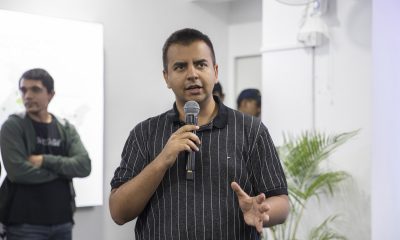Technology
Don’t forget the computer that landed Apollo 11 astronauts on the moon

From the first steps to the leap forward, Mashable is commemorating the 50th anniversary of the moon landing with a series that examines its significance — and why we haven’t been back.
The Soviets launched the first satellite into space. And the first man. Also the first woman. So when NASA astronauts rapidly approached the moon 50 years ago, a lot was riding on a computer with less than 80 kilobytes of memory.
By today’s standards, it’s a dinosaur. The Apollo Guidance Computer (AGC) weighed 70 pounds. Programs were literally woven into the hardware by hand — it was called “core rope memory.”
But it was revolutionary for its time. Back in the 1950s, when the prototype was conceived for a hypothetical mission to Mars, there weren’t many tech companies NASA could turn to for help. In fact, it was the other way around.
“It was these kinds of programs that were pushing the technology that created Silicon Valley,” said Philip Hattis, currently on the technical staff of the Draper Laboratory, formerly known as the MIT Instrumentation Laboratory.

The Apollo Guidance Computer and DSKY in all their glory.
As a graduate student, he worked with the MIT team that developed the AGC. The challenges were immense. In an age of massive IBM mainframes, they had to design a computer small enough to fit on a cutting-edge spaceship with a limited amount of fuel. Even today, it costs around $10,000 to put a pound of cargo into orbit.
Not only did it have to be light, the AGC needed to consume as little power as possible. It ended up needing around 70 watts — around the same as a lightbulb. And it had to be tough enough to survive the rigors of space travel.
“When you go through launch, it’s shaking like crazy, you’re pulling lots of Gs,” Hattis explained. “So it’s got to be rugged.”
Building a revolutionary, lightweight, super-tough computer took a lot of time and manpower. As in the equivalent of 2,000 years of engineering labor. That meant that once the custom AGC was finally completed, some of the technology was already out of date.
There were actually two of these computers on the Apollo 11 mission: one on the Command Module that housed the astronauts during most of their journey, and one on the Lunar Module that took Buzz Aldrin and Neil Armstrong down to the moon’s surface.
The astronauts controlled the computers through the DSKY (short for “display and keyboard”), which was barely more than a numeric keypad. They had to remember which number corresponded with the “verbs” and “nouns” that made up every command. (Yes, someone made a simulator if you want to try it out. Good luck.)
To put its computing power into perspective, the AGC could perform around 40,000 instructions per second, according to American Scientist. That’s far less than the 10 billion of a typical laptop.
This is what the astronauts used to navigate to the moon, along with a sextant.
“They could look out and see the positions of stars,” Hattis said. “Based on the size of the disc of the moon or Earth, and based on the angle of certain stars relative to the surface, they could get a position fix.”
And yes, plenty of people and computers were guiding them from Mission Control. But they needed to make course corrections on the fly. (There were also fears the Soviets and their lunar probe would interfere with communications.)
These days, your laptop, phone, and possibly even lightbulb or toilet have more computing power than the Apollo Guidance Computer. But this machine was efficient and totally ahead of its time. And without it the space program — and consumer technology as we know it — wouldn’t have traveled nearly so far.

-

 Business7 days ago
Business7 days agoLondon’s first defense tech hackathon brings Ukraine war closer to the city’s startups
-

 Entertainment7 days ago
Entertainment7 days agoMark Zuckerberg has found a new sense of style. Why?
-

 Business6 days ago
Business6 days agoHumanoid robots are learning to fall well
-

 Entertainment6 days ago
Entertainment6 days ago2024 summer TV preview: 33 TV shows to watch this summer
-

 Business5 days ago
Business5 days agoGoogle Gemini: Everything you need to know about the new generative AI platform
-

 Entertainment5 days ago
Entertainment5 days ago‘Bridgerton’: Everything you need to remember before Season 3
-

 Entertainment3 days ago
Entertainment3 days agoHands-on with the Claude AI app: It’s pleasant to use, but janky
-

 Business6 days ago
Business6 days agoIndian ride-hailing giant Ola cuts 180 jobs in profitability push






















